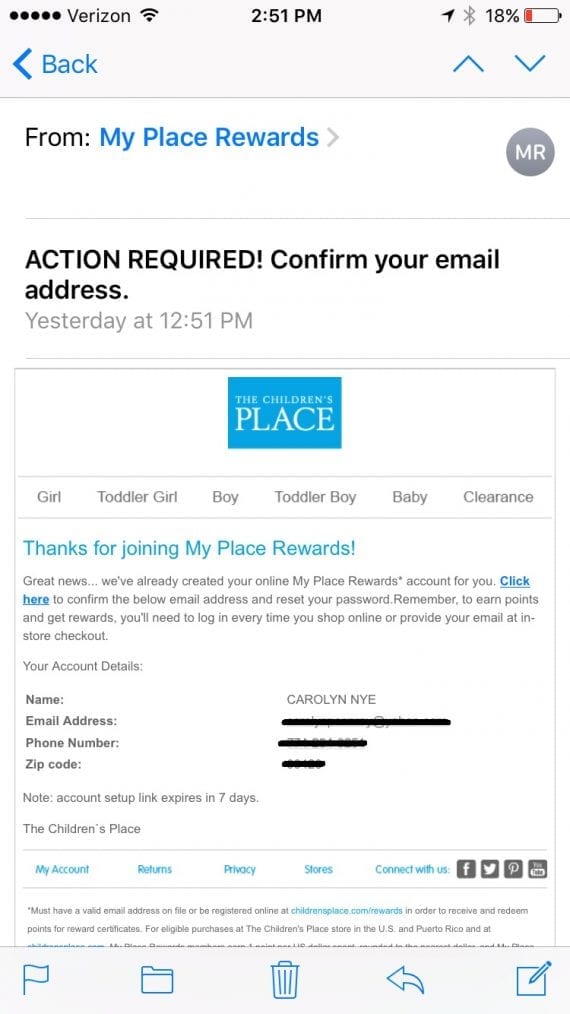Adding email subscribers usually translates into more sales. But soliciting email signups is often a tradeoff in quality versus quantity. In this article, I’ll explore the pros and cons of utilizing a double opt-in process vs. a single.
A double opt-in first requires an individual’s email address via a web form or pop-up box. That data is stored and an email is then sent to the subscriber’s inbox, to confirm. For a single opt-in, there is no further action needed by subscribers once they submit their email address.

A double opt-in first requires an individual’s email address. That data is stored and an email is then sent to the subscriber’s inbox, to confirm, such as this example with The Children’s Place.
Multiple Considerations
For email marketers, the decision to use a double or single opt-in typically involves multiple considerations.
First, there is the U.S. CAN-SPAM Act. It does not require senders to use a double opt-in. In fact, CAN-SPAM does not even require any type of signup process or permission. It simply requires that recipients must be given the ability to unsubscribe.
While the CAN-SPAM Act does not require a signup method, industry practices and habits, at least in the U.S., are to seek permission before sending an email. When email marketing was new, using a double opt-in process was also common to verify that the address was valid and capable of receiving email.
Organizations have varying privacy policies in the use of consumer data. For example, financial institutions often require stricter opt-in processes. But that’s not necessarily the case for ecommerce and marketing companies.
Double Opt-in vs. Single
There are pros and cons to each signup method.
Quantity vs. quality. A single opt-in will generally result in a higher number of subscribers. But they may be of lesser quality than those who went through a double opt-in. The reason is simple: People who go through a double opt-in really want to get emails from you. They are generally more active and responsive online.
Consumer expectations. Over the years, many organizations have migrated to a single opt-in, which has changed consumer expectations. Thus, when using a double opt-in, signup rates may fall because consumers may not realize or expect that further action is required.
Cost to email a larger list. Sending email is not free. The fee to many email service providers is based on a cost per thousand emails actually deployed. Sending to a larger list will cost more.
Fewer customers. A double opt-in produces fewer potential customers. So while the engagement rates and general quality of a double opt-in list may be better than a single opt-in, the gross revenue generated from the list may be less.
Adjustment in KPIs. Standard open and click rates are relative to the group or segment you are emailing. Key performance indicators for double opt-in subscribers, therefore, will differ from single opt-in. A 25-percent open rate on a single opt-in list may not produce more sales than a 12-percent open rate on a double opt-in list.




